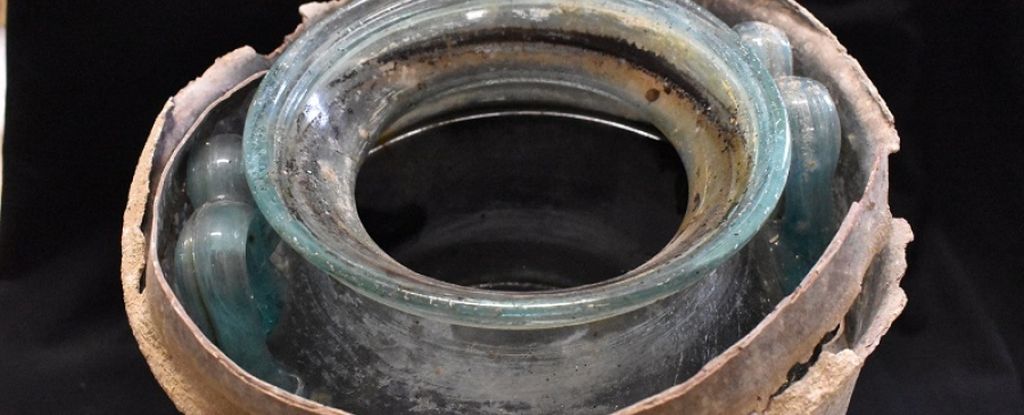There’s a new contender for the worst tipple handed down to us by history.
In the ancient Roman necropolis of Carmo in what is now Spain, archaeologists have unearthed a jar of wine, still sealed, and still sloshing liquid after about 2,000 years.
There’s just one catch. The wine was part of the grave goods accompanying the burial of a Roman man – and his cremated remains were plopped into the glass container before it was sealed. The wine, once a sweet white, is now stained a reddish color, and contains human dust.
Nevertheless, human dust, reddish stain, and all, the wine now constitutes the world’s oldest known vintage, topping the 4th century CE Speyer wine bottle by hundreds of years.
“We were very surprised,” says archaeologist Juan Manuel Román of Carmona’s Museum of the City, “that liquid was preserved in one of the funerary urns.”
The mausoleum itself, likely the collective tomb belonging to a specific family, is something of a delightful rarity. Often, as the millennia pass, ancient tombs are pillaged, leaving little for historians to mull. But in 2019, archaeologists stumbled upon the chamber in southern Spain, still sealed, preserving its contents against the ravages of time and grave-robbers.
There, they found a number of luxurious grave goods – patchouli perfume, jewels and jewelry, fabrics, glass objects, and a large lead container. When the researchers opened the container, they found a sealed glass urn, half-filled with some sort of liquid.
Pouring wine onto the cremated remains of a loved one is a known funerary practice from ancient Roman times, but there’s also a chance that the liquid seeped into the urn by mistake.
Sealed or not, there are other ways liquid could have gotten inside the tomb, as we saw with the sealed ancient Egyptian sarcophagus that turned out to be full of wetness. The tomb could have flooded at some point, or the mausoleum could have sprung a leak. Or something could have condensed in the jar.
Led by chemist Daniel Cosano of the University of Cordoba in Spain, the researchers set about performing a comprehensive series of chemical analyses, to determine what the liquid actually was.
They measured the pH of the liquid, and the organic matter within. Using inductively coupled plasma mass spectrometry, they identified the chemical elements in the mineral salts in the liquid. And high-performance liquid chromatography-mass spectrometry was put to work to identify polyphenols, chemical compounds that can be found in food and drink.
This data was then compared to wines from nearby regions: Montilla-Moriles, Jerez, and Sanlúcar.
Both the mineral salt profile and the polyphenols were consistent with wine, with similarities to all three wine regions. In addition, one particular polyphenol expected in red wine, syringic acid, was absent. This suggested that, although the color of the liquid was red, originally it was a white varietal.
The team then tried to narrow down where the wine could have been made. They were unable to make a conclusive ruling, because they had no contemporaneous local wines with which to compare it, but it did share some similarities with local modern wines. Interestingly, it seemed very similar to the sweet wines of Montilla-Moriles, a wine-making region from which Poe’s famous Amontillado hails. That’s unrelated, but it’s a fun coincidence.
The Roman man who was laid to rest in an urn of wine was interred in the same chamber as five other people. Another glass urn at the site contained the cremains of a woman named Hispana. She was not submerged in wine (although some Roman women were buried with wine); her urn, in addition to her remains, contained amber jewels, a rock crystal jar containing patchouli, and fabric that was once silk.
The Roman man’s urn, too, was not without its riches. His jar contained a gold ring, on which was carved a representation of Janus, the Roman god of time, passages, transitions, and endings.
There are worse ways to be remembered.
The team’s findings have been published in the Journal of Archaeological Science: Reports.











/https://tf-cmsv2-smithsonianmag-media.s3.amazonaws.com/filer_public/34/31/3431771d-41e2-4f97-aed2-c5f1df5295da/gettyimages-1441066266_web.jpg)








Discussion about this post